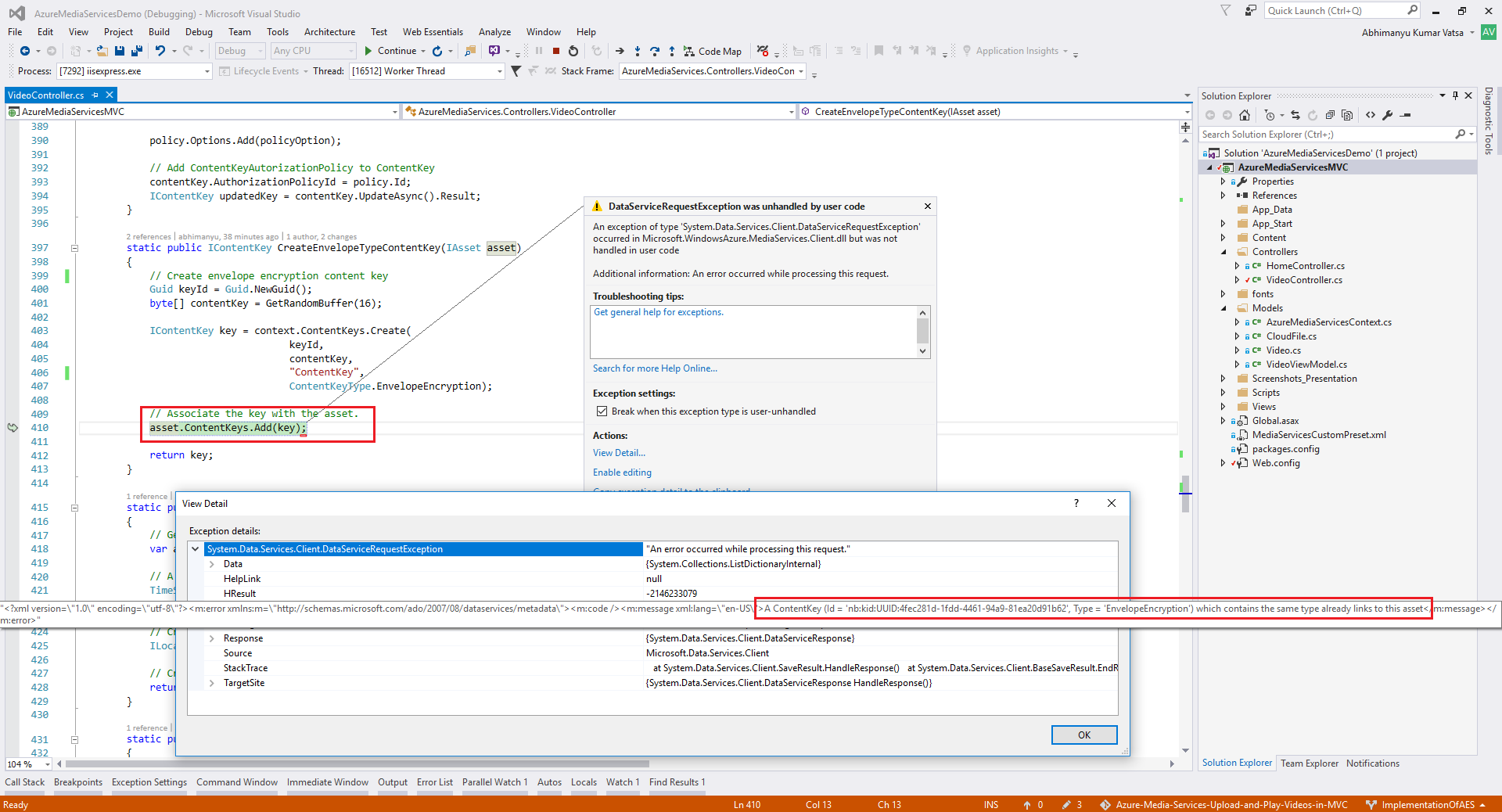I am working on open source community project Azure Media Services Upload and Play Videos in MVC since 2015. I was not using any delivery encryption earlier, so I started working on AES.
In all the source code/samples by Azure Media Services Team, i noticed test token was being generated just after uploading the content and this works well in my case too. But, how do I generate test token next time onward for playback?
What I understood is that, we need token each time player requests playback. Technically, player creates a request to key service provider and received updated token.
So to get updated token, I tried couple of ways n not able to fix this, i see error "A ContentKey (Id = '...', Type = 'EnvelopeEncryption') which contains the same type already links to this asset".
This looks like a valid error message because key of type EnvelopeEncryption was already added and associated with asset after uploading content, and upon requesting again this pops-up.
The code given below is copied from here.
public ActionResult Index()
{
var model = new List<VideoViewModel>();
var videos = db.Videos.OrderByDescending(o => o.Id).ToList();
foreach (var video in videos)
{
var viewModel = new VideoViewModel();
viewModel.Id = video.Id;
viewModel.EncodedAssetId = video.EncodedAssetId;
viewModel.IsEncrypted = video.IsEncrypted;
viewModel.LocatorUri = video.LocatorUri;
// If encrypted content, then get token to play
if (video.IsEncrypted)
{
IAsset asset = GetAssetById(video.EncodedAssetId);
IContentKey key = CreateEnvelopeTypeContentKey(asset);
viewModel.Token = GenerateToken(key);
}
model.Add(viewModel);
}
return View(model);
}
Above method calls media service key service provider.
How do I fix this?

